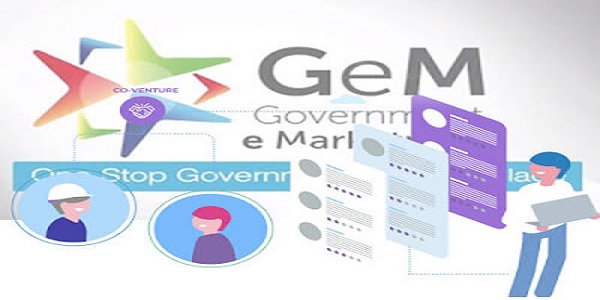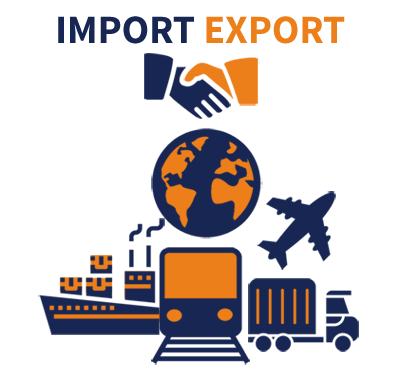It is beyond any doubt that the government has introduced numerous measures in recent years to boost the overall ease of doing business in India. It has assisted small traders and manufacturers in excelling in today’s competitive globalized economy.
To empower small traders and manufacturers, the Indian Government launched a transparent e-Marketplace popularly known as GeM.
Any small trader or manufacturer can get a GeM registration for its business easily. A business can then access the wide interface to sell its products and services to distinguished buyers from the Government sector or PSUs, where there is a huge requirement for such supplies.
1. WHAT IS A GEM?
The Government e-Marketplace (GeM) is basically an e-commerce portal operated by the Government of India. It is an online platform where sellers and government buyers meet to facilitate the procurement of Goods & Services that are required by different Government Departments, Organizations, and Public Sector Undertakings.
2. WHICH LAW HAD BROUGHT IN GEM?
The government established the GeM portal in 2017 under the Allocation of Business Rules, 1961.
3. WHAT IS THE MAIN OBJECTIVE BEHIND THE GEM?
The key goal behind the beginning of the GeM is to guarantee transparency, effectiveness, and swiftness in procuring supplies.

4. WHAT ARE THE BENEFITS OF SELLER’S GEM REGISTRATION?
By obtaining the GeM Registration, you can truly enjoy the following benefits of smarter trade & commerce as proposed by the government-
-
Direct Sell: This feature helps the private traders to sell their products of value up to ₹50,000/- at a fair price directly to the government buyers without any hassles.
-
Assistance to small traders: The traders having GeM registration can take benefit from various trade avenues such as e-bidding, reverse e-auction, and demand aggregation.
-
Buyers on the GeM Portal
The following organizations can register on the GeM portal as buyers and are authorized to make procurement through the portal:
- Central Government.
- State government ministries.
- State government departments, including its subordinate offices.
- Central and State autonomous bodies.
- Central and state PSUs and local bodies.
The following government officers/head of offices can register their organizations as primary users on the GeM portal:
- Any officer of
- Central Government.
- State government.
- Public Sector Units (PSU).
- Autonomous bodies, local bodies, constitutional bodies, or statutory bodies at the deputy secretary of government level.
- Head of the office at sub-center, unit, or branch.
The primary users are responsible for registering their organizations on the GeM portal, but they cannot participate in the procurement. They need to create user accounts for the secondary users, assign them roles and responsibilities and supervise all secondary users’ transactions on the portal.
The secondary users are the buyers for the procurement of the organization. However, a primary user can be a consignee to receive a service/product. The secondary users are officials responsible for procurement on the GeM portal, including receipt of stores, placement of contracts, payment to the sellers, etc.
The primary user can give the secondary users the role of a buyer, consignee, Drawing and Disbursing Officer (DDO), paying authority, etc. The buyer is the official responsible for processing procurement transactions till the order placement stage. The consignee will be the secondary user responsible for accepting the goods procured and certifying receipt in the buyer organization.
The secondary users should utilize the GeM portal for the purchases as follows:
- Direct purchase up to Rs.25,000 without comparison (except automobiles) through the suppliers available on the GeM portal meeting the requisite specification, quality, and delivery period.
- L1 purchase through direct purchase for orders above Rs.25,001 up to Rs.5,00,000 through the GeM sellers having the lowest price by comparison between at least three different Original Equipment Manufacturers (OEM) or service providers on the GeM portal meeting the requisite specification, quality, and delivery period.
- Purchases worth more than Rs.5,00,000 can be made on the GeM portal through the supplier having the lowest price meeting the requisite specification, quality, and delivery period. After obtaining bids, the purchases must be made using the reverse auction tool or online bidding provided on the portal (excluding automobiles, where the limit is Rs.30,00,000). The procuring authorities should certify the reasonability of rates.
Registration of Buyers on the GeM Portal
The prerequisites for primary user registration are:
- Aadhaar number of the primary user.
- A mobile number linked with Aadhaar.
- Email IDs are hosted by National Informatics Centre (NIC). Only the NIC registered email IDs can register on the GeM portal, i.e. official email ID.
The process of registration of buyers on the GeM Portal is as follows:
- The primary users need to visit the GeM Portal.
- Primary users have to click on the ‘Sign Up’ button and select the ‘Buyer’ option on the right-hand side of the homepage.
- On the next page, the users have to click on the ‘Review Terms and Conditions’ button, read the terms and conditions document, and select the ‘I have read and agree to the Terms & Conditions of Government e-Marketplace (GeM)’ option on the document.
- Next, the primary users must enter the ‘Aadhar Number’, and ‘Mobile Number Linked with Aadhar’ and click on the ‘Verify Aadhar’ button.
- The primary users need to fill in the required details such as organization details, user name, password, official email ID, and mobile number on the account registration form and click on the ‘Create Account’ button.
- The primary users must verify the official email ID by opening the GeM verification mail sent to the official email ID and clicking on the ‘Verify Email’ button.
- The primary users should visit the GeM Portal, click on the ‘Login’ button on the homepage, enter the user ID and password, and log in to the portal.
- The primary users must create secondary users by clicking on the ‘User’ button on the top right-hand side of the homepage, clicking on the ‘Add user’ button, filling up the details of the secondary user, and clicking on the ‘Add’ button.
The secondary users can log in to the GeM Portal through the user ID and password shared by the primary users and procure goods and services from the portal. The primary users can change the roles and profiles of the secondary users.
The secondary users who have been assigned the role of buyers by the primary users can log in to the portal, select the product and add it to the cart. They need to create demand, generate sanction orders, and generate contracts. Once an order is placed, the seller will deliver the goods or services to the consignee within the stipulated delivery date and generate an online invoice on the GeM portal.
The consignee should log in to the portal after receipt of goods or services and generate a Provisional Receipt Certificate (PRC) and a Consignee Receipt and Acceptance Certificate (CRAC). After the generation of the CRAC, the buyer will process the bill and forward it to the paying authority. The payment will be made within ten days of the generation of CRAC.
GeM Portal Advantages for Buyers
- Provides transparency and lists various products for each individual category of goods and services.
- Price comparison and trends from multiple suppliers.
- Easy to comprehend interface to search, select, compare, and buy.
- User-friendly dashboard for monitoring payments and supplies.
- Multiple consignees can be selected for services.
- The buyers can apply additional deductions at the time of bill generation.
- Provision of the easy return policy.
Sellers on the GeM Portal
The seller or service provider means any legal entity that sells its goods or renders services to the buyers registered on the GeM portal. The following legal entities can register as sellers on the GeM portal:
- Proprietorship firm.
- Partnership firm.
- Limited Liability Partnership (LLP).
- Private and public limited company.
- Society registered under the Societies Act.
- Statutory bodies.
The seller can be an OEM (Original Equipment Manufacturer) or an entity having the authorization to sell products manufactured by the OEM in the open market. OEM means the owner of the branded or trademarked products offered for sale on the portal or the product’s actual manufacturer when they do not have a brand or trademark.
The following persons are considered OEM and can sell products on the GeM portal:
- Manufacturers.
- Brand owners and third-party manufacturing.
- Importer and authorized sellers.
- Service provider.
- Assemblers.
Once the sellers register on the GeM portal, they should list their products or services under the specified categories. They need to deliver the product to the consignee when an order is received by entering its details on the portal.
After the order is delivered, the consignee will inspect the product and issue acceptance or rejection online. When the consignee accepts the order, he/she will generate the Consignee Receipt and Acceptance Certificate (CRAC). After issuing the CRAC, the buyer will process the bill and forward it to the paying authority. The payment will be made within ten days of the generation of CRAC.
Registration of a Seller on the GeM Portal
The prerequisites for seller registration are:
- The aadhaar number is linked with the mobile number or PAN number.
- Email ID.
- PAN number of the business.
- Registration certificate of the business.
- CIN (Corporate Identification Number), in the case of private/public limited company.
- Income Tax Return (ITR) details for the last three years.
- Billing address with GSTIN number.
- Bank account number and IFSC code.
The process of registration of sellers on the GeM Portal is as follows:
- The sellers need to visit the GeM Portal.
- Sellers have to click on the ‘Sign Up’ button and select the ‘Seller’ option on the right-hand side of the homepage.
- On the next page, the users must click on the ‘Review Terms and Conditions’ button, read the terms and conditions document, and select the ‘I have read and agree to the Terms & Conditions of Government e-Marketplace (GeM)’ option on terms and conditions document.
- Next, the sellers must enter the required details on the account registration form and click on the ‘Create Account’ button.
- The sellers have to verify the email ID by opening the GeM verification mail sent to their email ID and clicking on the ‘Verify Email’ button.
- The sellers should visit the GeM Portal and click on the ‘Login’ button on the homepage, enter the user ID and password and log in to the portal.
- The sellers need to create a bank account that will be linked to the GeM portal, deposit the caution money, and list their products/services.
There are no charges for registering as a buyer or seller on the GeM portal. But, the sellers need to deposit the caution money on the GeM portal.
GeM Portal Advantages for Sellers
- Sellers get access to the National Public Procurement market.
- There is no fee or charge for registration.
- Multiple invoices for a single order.
- The sellers will be able to view the reasons for rejection if the consignee rejects goods.
- Easy access to participate in reverse auction/bids.
- Sellers belonging to North-East states and Jammu and Kashmir are exempted from ITR at the time of bid participation.
- Direct access to government organizations and departments.
- Price can be changed based on the market conditions.
The sellers on the GeM portal can be proprietor firms, startups, or even companies. They can easily list their goods on the portal for procurement by government organizations and participate in government bids and auctions. The GeM portal thus facilitates transparency in the government public procurement process.





